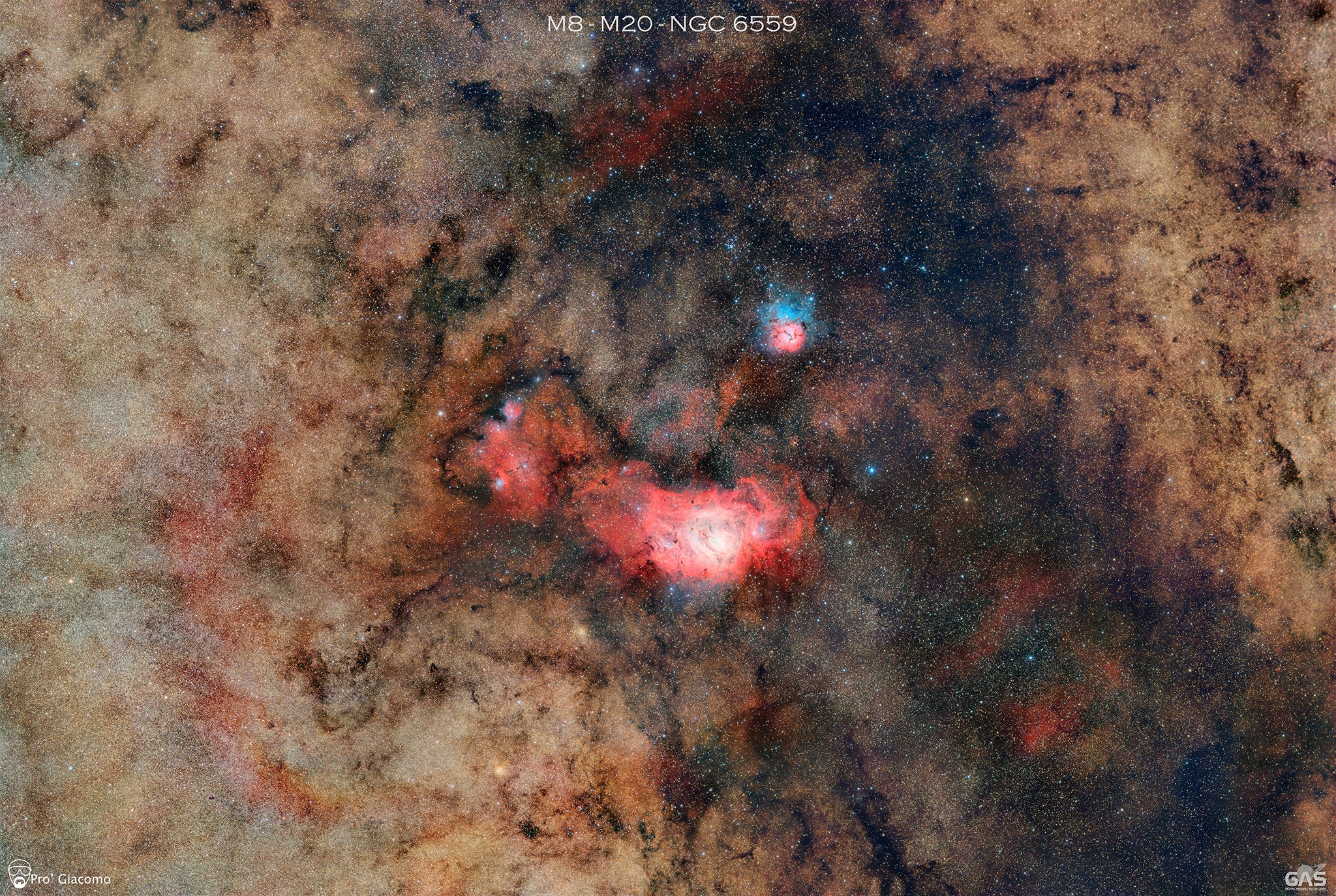The Lagoon Nebula (M8), Trifid Nebula (M20) and NGC 6559 + Giacomo Pro + L-QEF (L-Quad Enhance Filter)
The Lagoon Nebula (M8), Trifid Nebula (M20) and NGC 6559
Credit: Giacomo Pro
Filters: Optolong L-QEF (L-Quad Enhance Filter)
The Lagoon Nebula (M8), Trifid Nebula (M20) and NGC 6559
These are three beautiful emission nebulae visible in the constellation Sagittarius, often photographed together in astrophotography due to their proximity, immersed in the sea of stars of our galaxy.
The Lagoon Nebula is a diffuse nebula located about 4,100 light years away from us and is part of the Sagittarius arm of the Milky Way. Its name derives from the characteristic dust cloud visible to the east of the central open cluster. Inside it are numerous Bok globules, dense gas clouds associated with star formation.
The Trifid Nebula is located about 5200 light years away and is distinguished by its structure divided into three parts by dense dust clouds. Its name, “Trifid”, derives from this characteristic division. In addition to the emission component (reddish), it also has a reflection zone (bluish) and dark nebulae. It is also the site of intense star formation, with young stars and stars in formation shrouded in dust clouds.
Both are easily observable with telescopes and, under favourable conditions, even with binoculars, especially during summer nights.
The NGC 6559 Nebula is located about 5000 light years away from us and its complexity shows the turmoil that stars can create when they come to light. The ultraviolet light from young stars bombards gas and dust, causing them to glow: the diffuse reddish glow comes from the emission of hydrogen gas, while the bluish hue is due to reflection and scattering by cosmic dust particles. The brown spots indicate the presence of dense dust that blocks and absorbs light, preventing us from observing the stars behind them. There are also filaments of finer dust that create dark formations within the bright clouds.
Light: 322 x 180 seconds
Filter: Optolong Astronomy Filter L-QEF
Camera: Asi 294 mc pro
Lens: Samyang 135mm
Guide camera: Asi 120 mini
Guide scope: 60 - 320 mm
Mount: Skywatcher Eq 6-r Pro
Acquisition: Asiair Plus
Software: DSS - Pixinsight – Photoshop
Shots: 22-23-24/06/2025
Location: Torricella (TA) ITALY
SQM: 19.65
Author: PRO’ GIACOMO.
Hope you like it.





